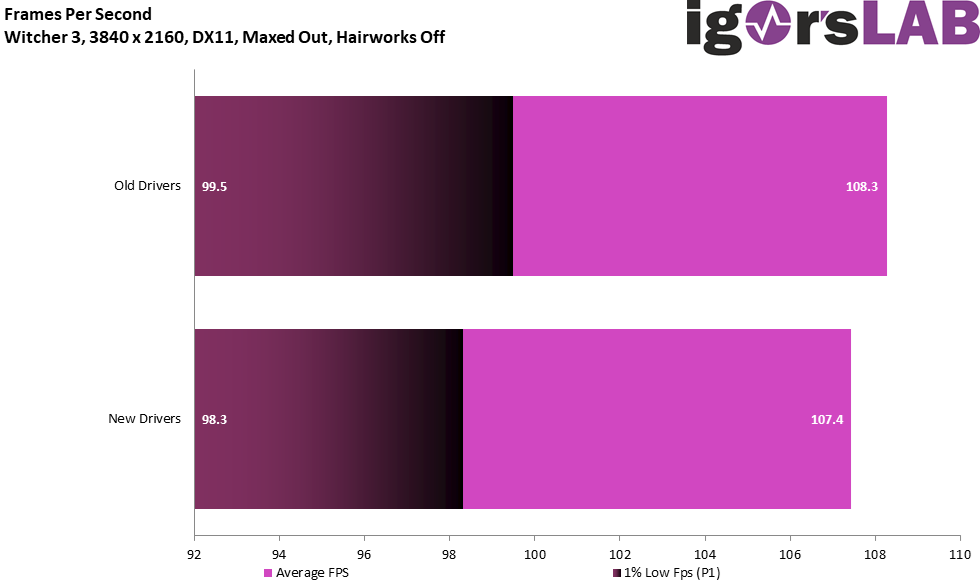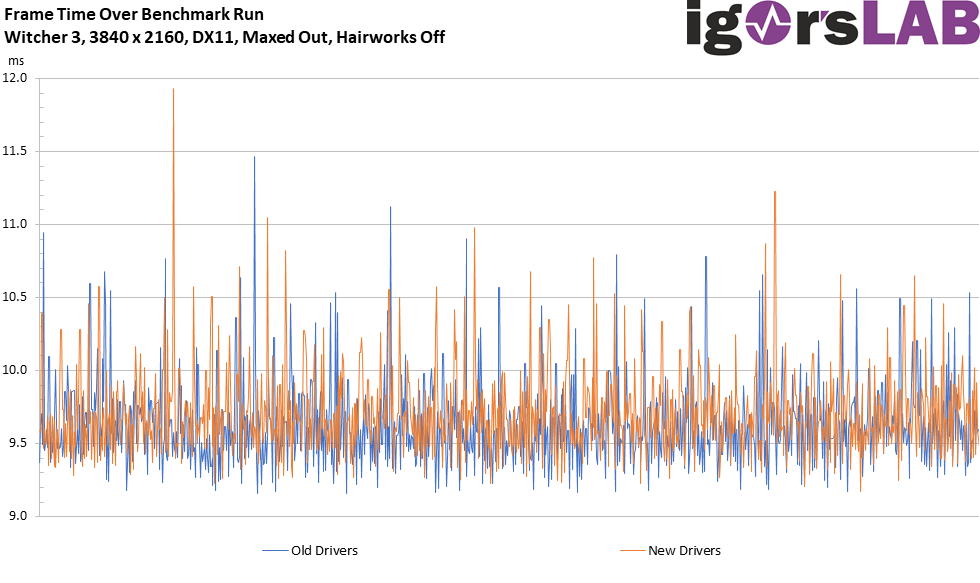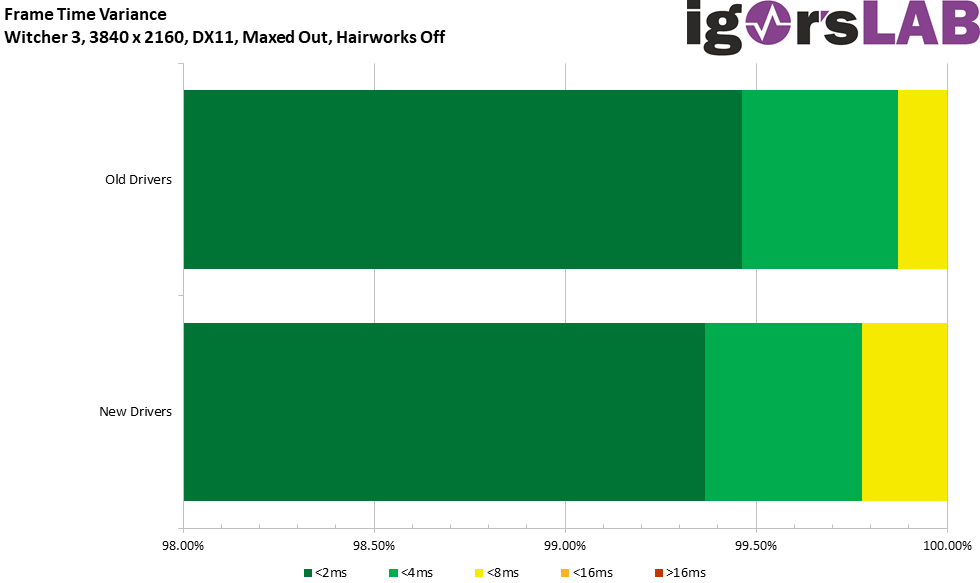Some pages and forum posts report that some games would run faster with the new drivers despite energetic braking, while others would lose performance slightly. In order to exclude the improvements that are often included in new drivers, I used Witcher 3 as usual, because the power consumption is highest here and probably nothing should ever be optimized on the drivers side again. If we first look at the FPS numbers, then everything is within a very manageable range and, moreover, almost at the tolerance limit. 10 passes each, but all in the same order. The following charts are from the 7th run that comes closest to the average of all runs. However, even the worst run did not show a 2 FPS difference. It goes without saying that the card was first warmed up for 20 minutes. It goes without saying that the card was first warmed up for 20 minutes.
Attention, the coordinate origin is here exceptionally at 92%, if you would look at it at 0, it would be factually not visible.
In a direct comparison of the Frame Times, however, you can see that the “slower” rendered frames have gained a little bit in the needed, but not so clearly in the frequency of occurrence.
In order to really see differences, I have to make an effort to see the variances, whereby everything over 95% is in fact no longer relevant and subjectively perceptible in the optical perception. So you can measure it, but you can’t see it. That’s why I also moved the axis begin to 98% percent to see at least anything.
Conclusion and summary
Let’s look at it this way: The somewhat too optimistic specifications of the power delivery via Boost and the Clock rate have mercilessly, though certainly not intended, revealed the not quite so optimal board layouts or the cheaper component selection. In addition, there was the unexpected and very annoying shutdown of power supply units that were actually sufficiently dimensioned, whose only fault was that they wanted to protect themselves and the connected hardware much too quickly.
The fact that the telemetry can now be influenced almost losslessly by means of a simple driver in such a way that all the consequences of the hasty load changes and the resulting peaks can be eliminated or at least very strongly mitigated in one go is pleasing, but at the same time it raises new questions as to why all of this wasn’t tested earlier. And as far as the question of MLCC vs. polymer caps is concerned: it is the appropriate mix of both that makes such a graphics card safer, at least for borderline areas.
It runs now with the new drivers as expected, also a fact.



































Kommentieren